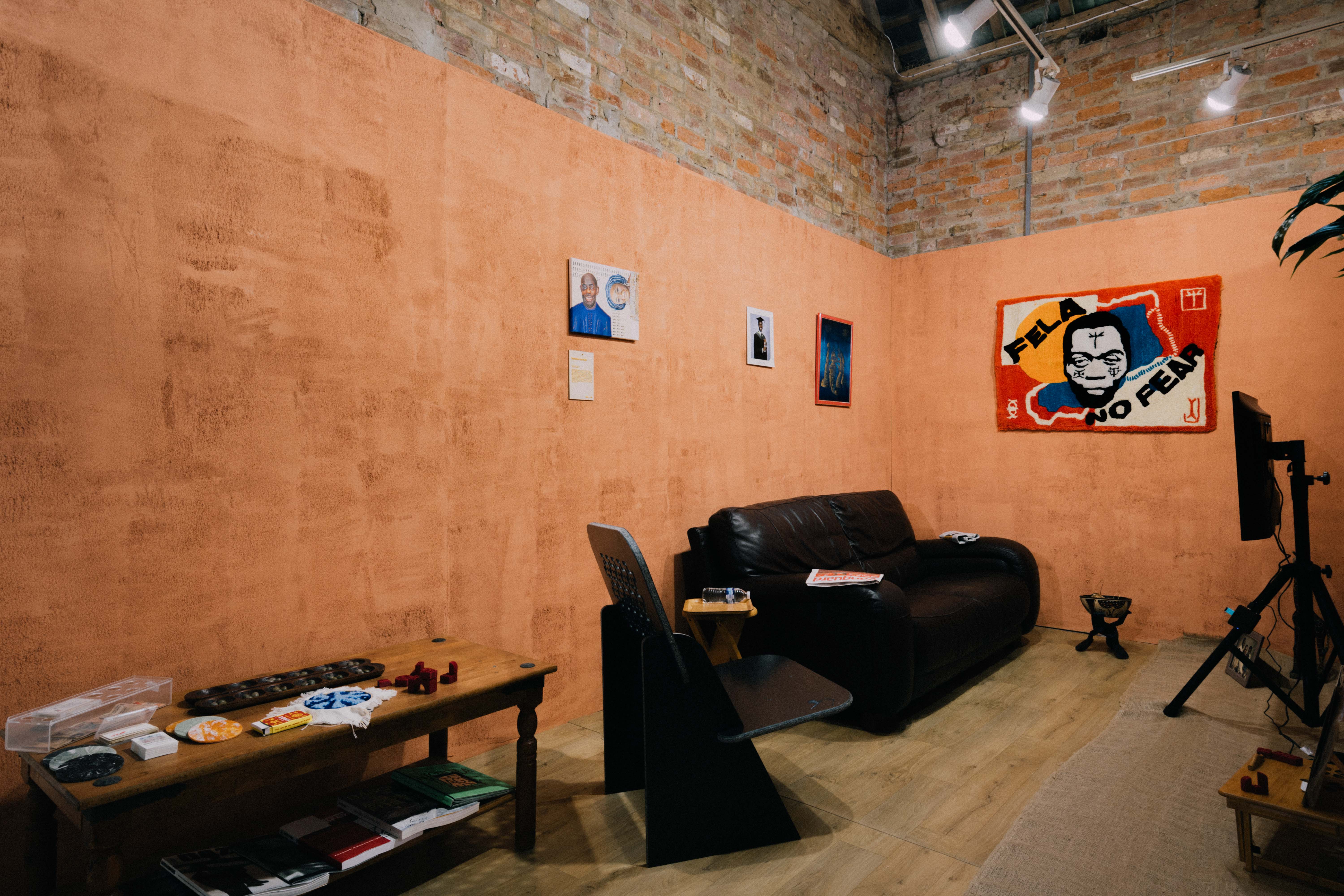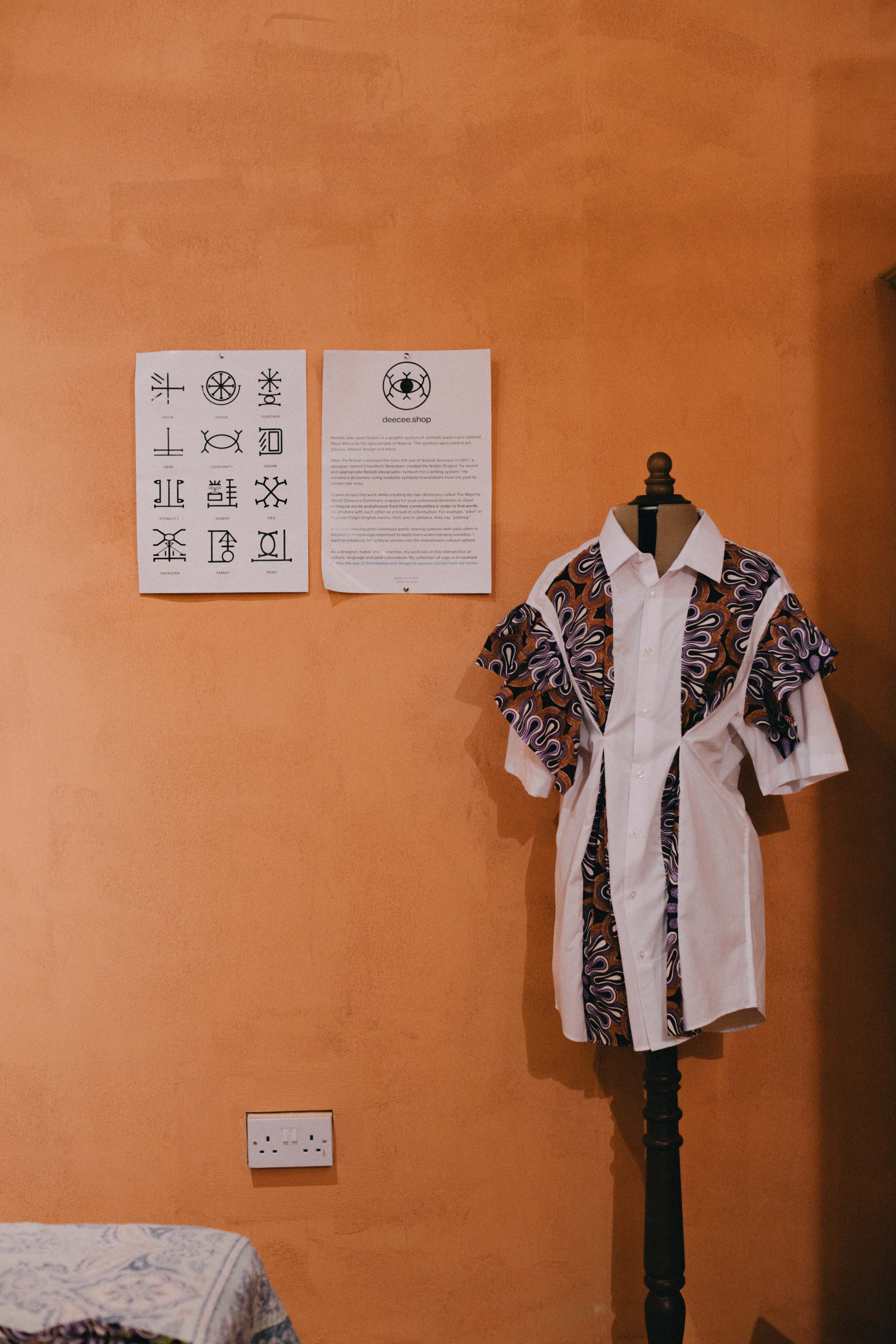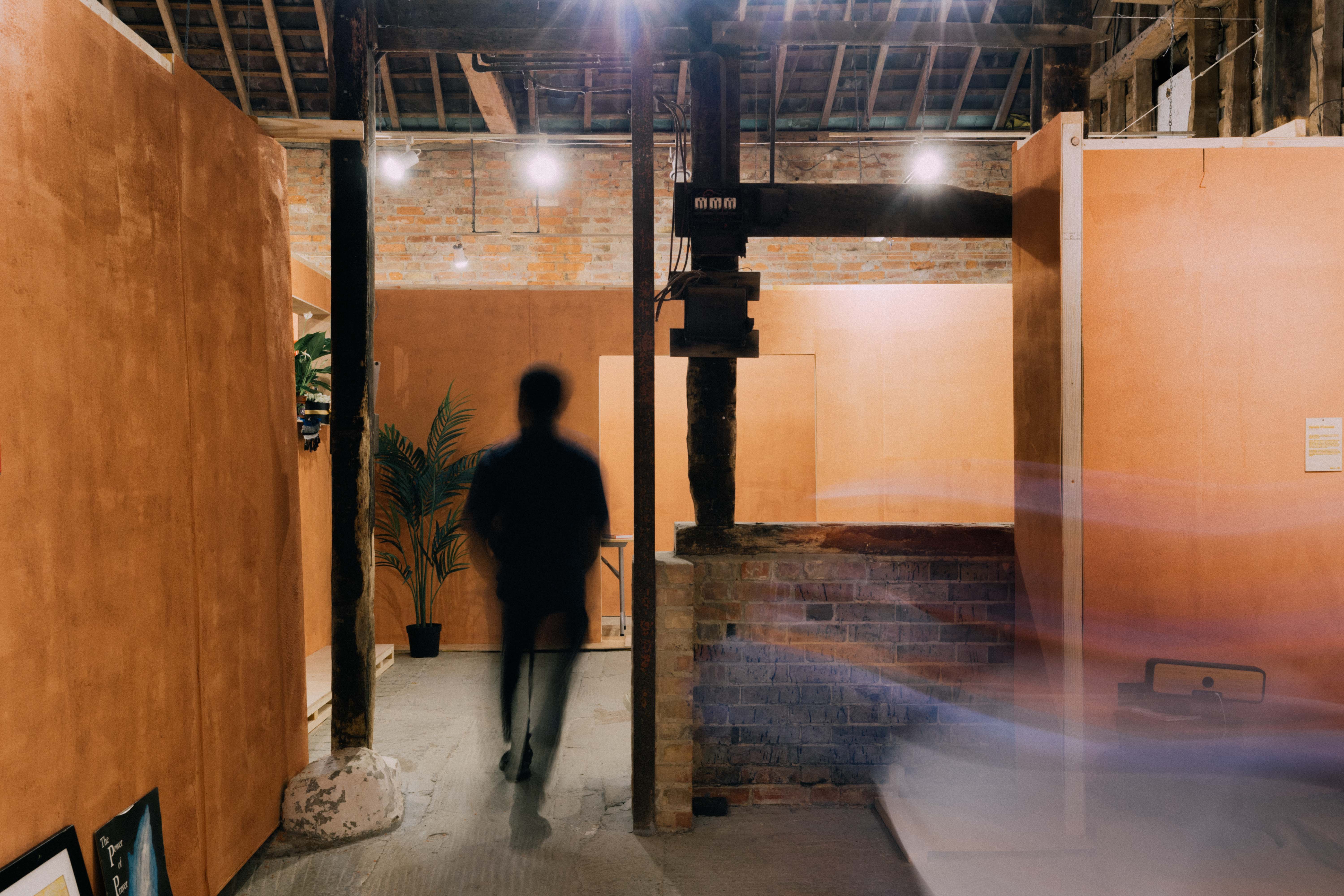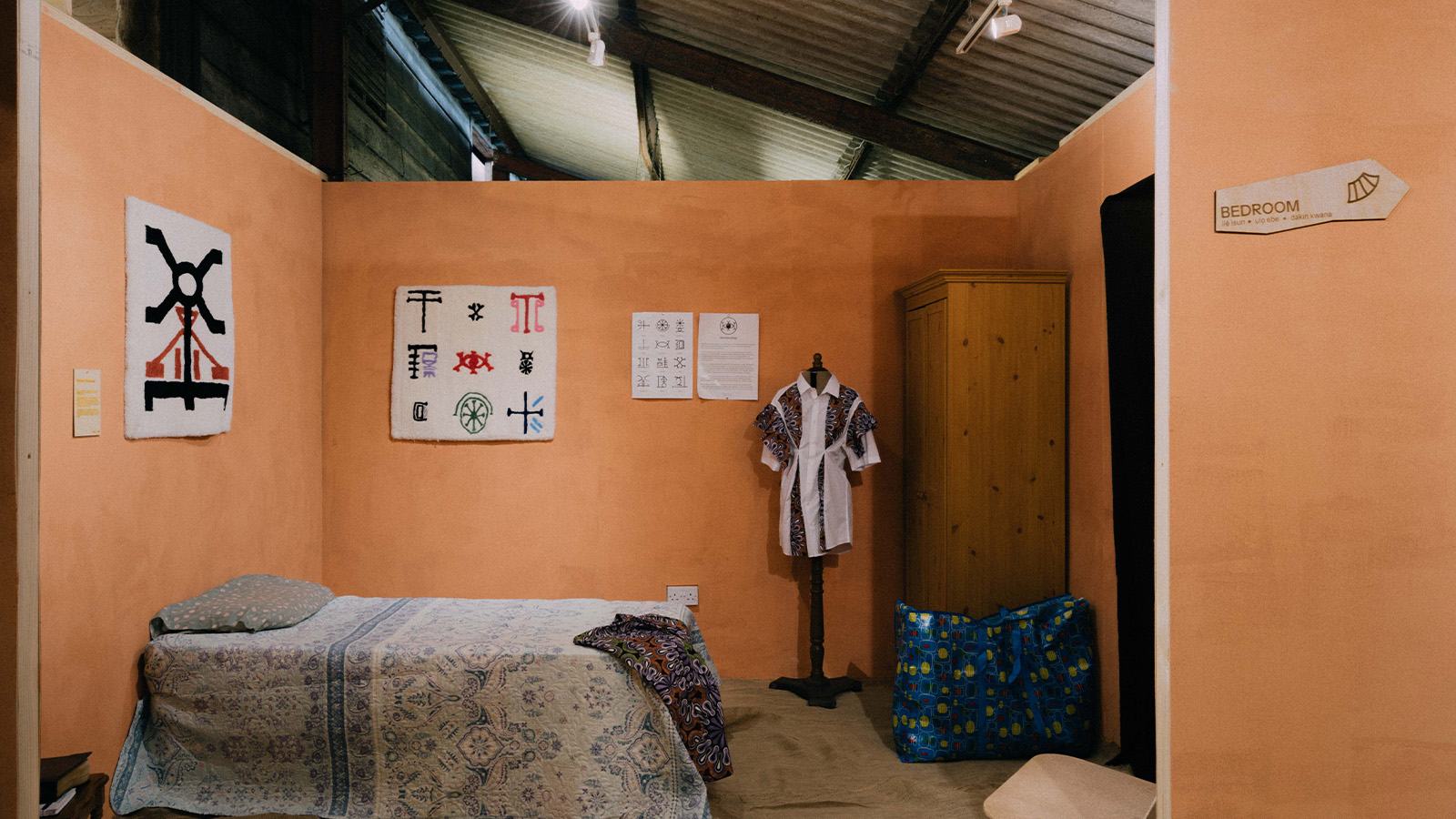
What defines a Nigerian home? Is it the strategy game Ayo in the living room, the family photos that adorn the walls, or the traditional Igbale broom in the kitchen? According to designer Moyo Adebayo, African dwellings are characterised by a strong sense of culture, tradition, and unity. Through his latest exhibition, ‘What Makes a Space Nigerian?’, the architecture graduate seeks to celebrate the key elements of these West African Homes.
'What Makes a Space Nigerian?' by Moyo Adebayo
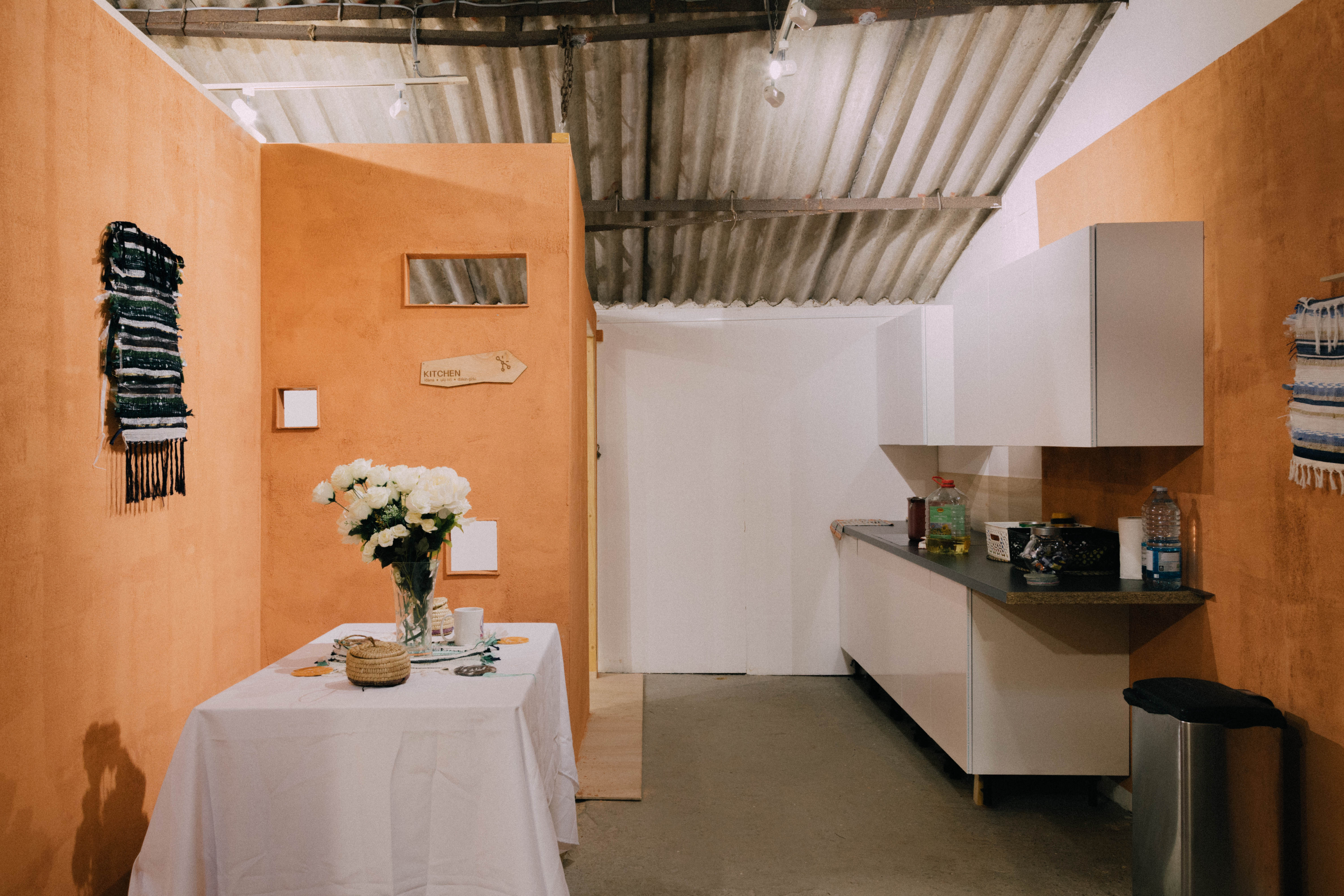
For the show, Adebayo teamed up with curators Oreofe Ogunkoya, Bewaji Oyesanya, Tunmiji Osibodu, and Israel Taiwo to build a modest West African residence inside a 200-year-old barn in Milton Keynes. ‘Our aim was to create a space that Nigerians could connect with,’ explains the designer.
Featuring domestic spaces such as a kitchen, living room, and bedroom, the display incorporates an exhibition area and a stage for discussions. ‘The spatial design draws inspiration from the vernacular homes of the Yoruba and Igbo tribes’ notes Adebayo.
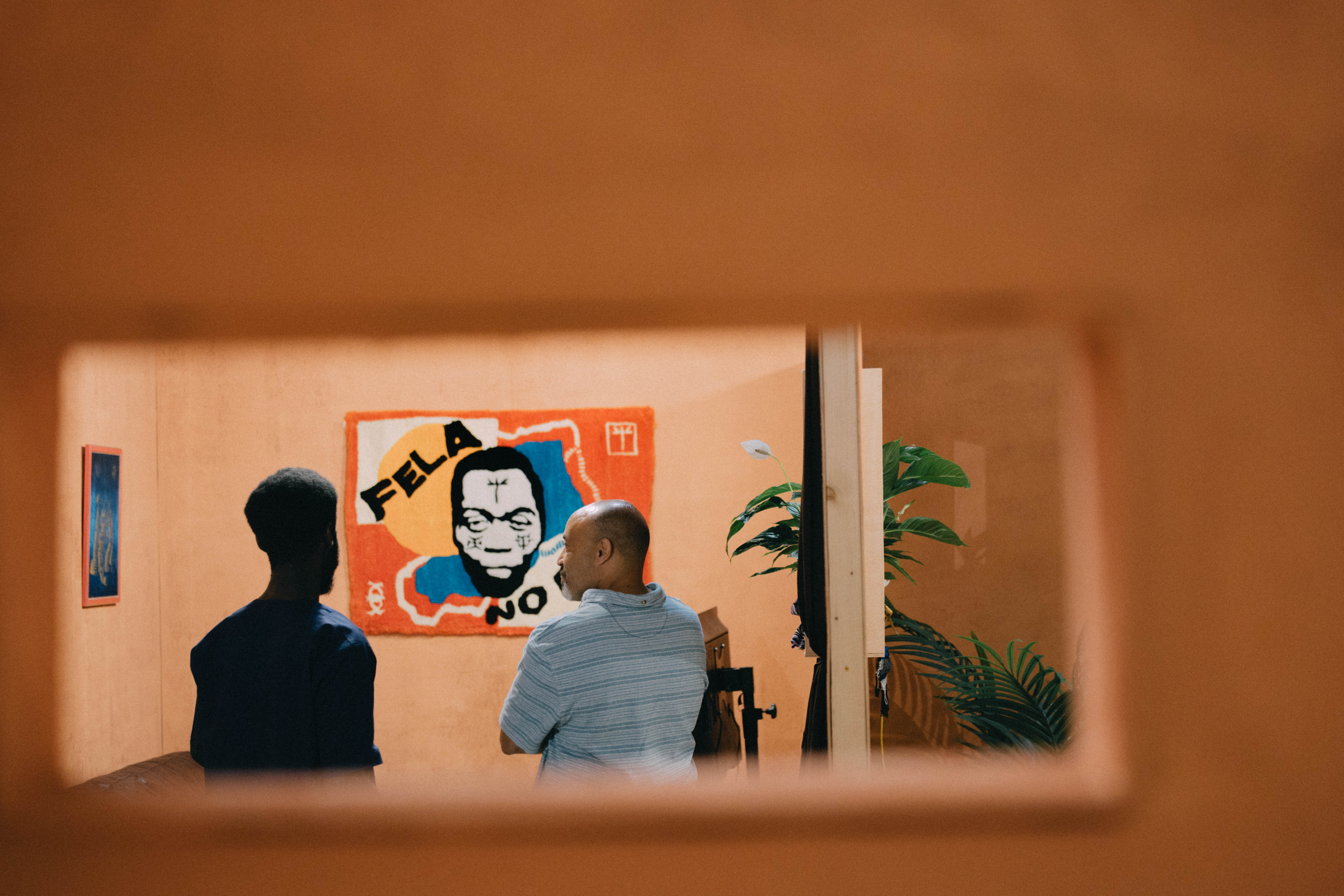
‘The exhibition is made out of modular stud walls that were all built on site’. Each panel was custom-made to accommodate the barn’s uneven surfaces. They were then finished in render to mimic the appearance of adobe walls found in pre-colonial Southern Nigerian homes.
Inside the exhibition, the strategic West African game Ayo can be found alongside paintings and photos of loved ones. ‘Family is very important to us so a Nigerian house would be populated with pictures of relatives,’ explains Adebayo. A bible and illustrations of biblical stories have been thoughtfully placed in the living quarters to reflect the importance of religion in Igbo and Yoruba households.
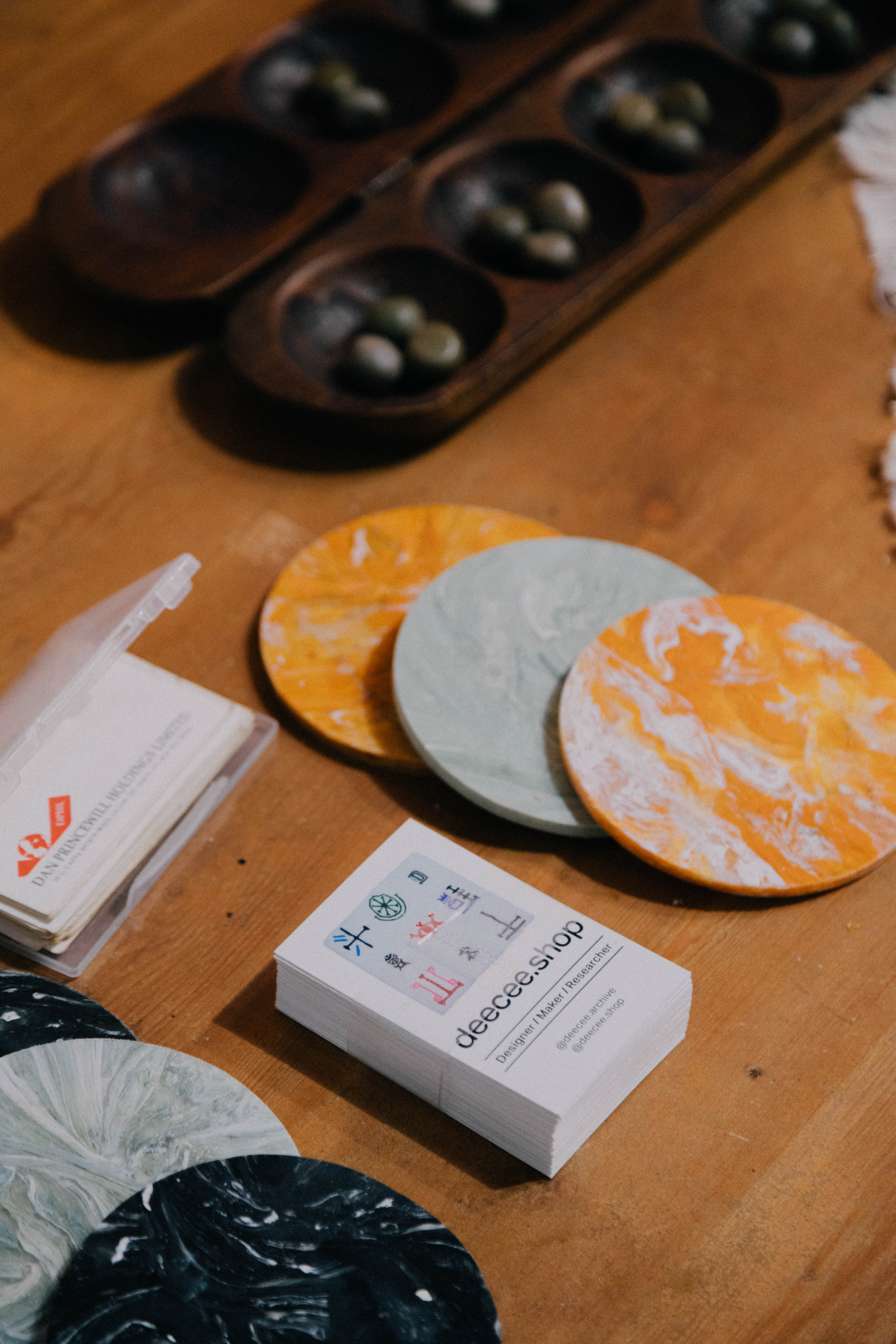
The act of greeting, a central aspect of Nigerian culture, was portrayed in the exhibition as a tray of drinks placed in the living room. According to Adebayo this represents the warmth and hospitality that Nigerian households are known for. ‘Through the items we curated in the space we wanted to create awareness around Nigerian culture’ notes Adebayo.
To ensure that he got the spaces and items inside the exhibition correct, Adebayo conducted interviews with Nigerian families, gathering insights into the daily activities that define their homes, from cooking rituals to religious practices.
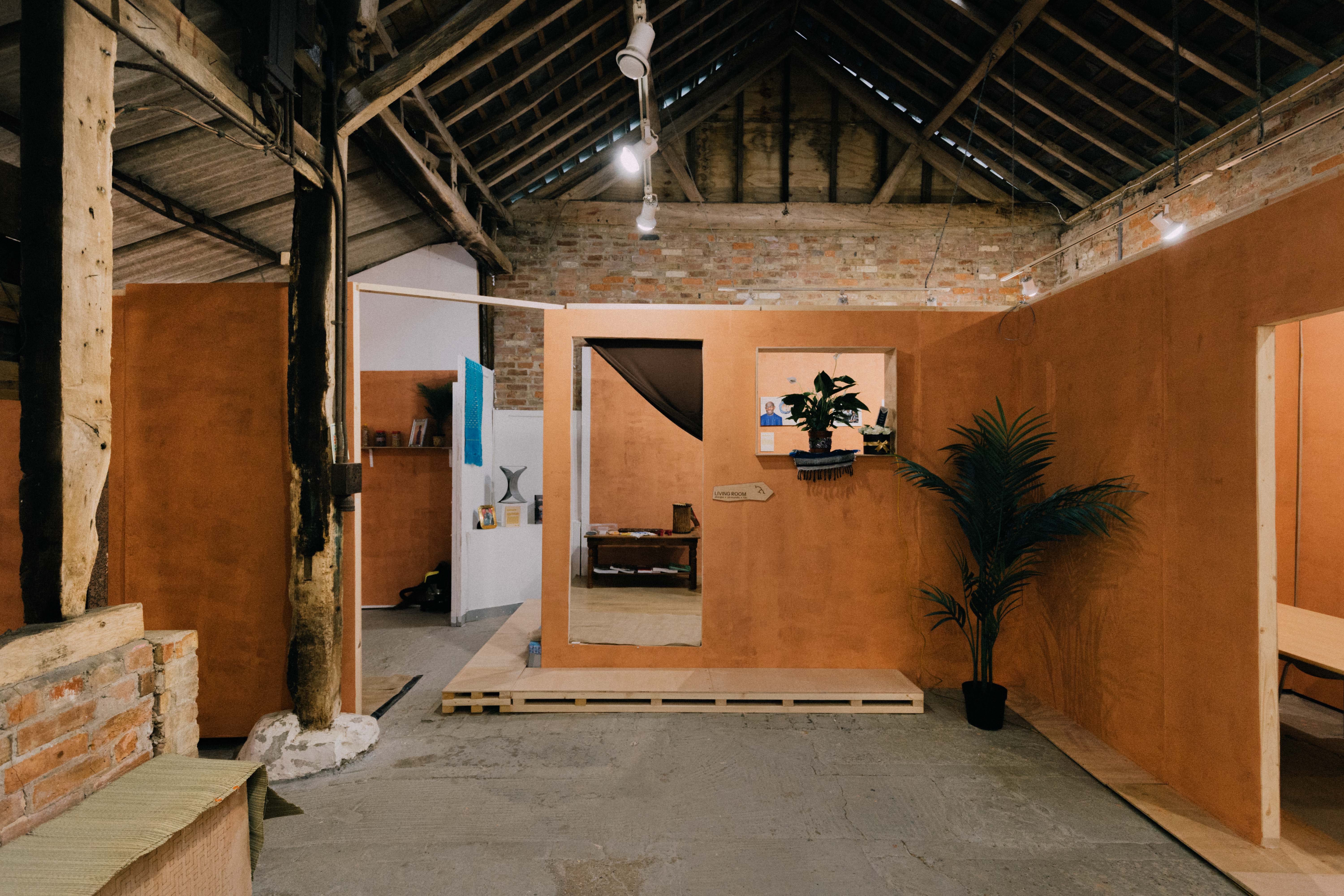
In the exhibition, visitors can also learn about Nsibiri, a graphic system that was used in pre-colonial West Africa. These symbols were previously used in art, for tattoos and interior design. Visitors can also see work by contemporary Nigerian artists, such as Myles Igwebuike, Olaoluslawn, and Ife Somefun. One standout piece is Zoe Chinonso Ene’s ‘IO Stool’, which incorporates Igbo symbols and challenges the conventional boundaries of functional ornamentation. These artistic pieces not only contribute to the visual identity of the recreated home but also evoke memories of Nigerian life.
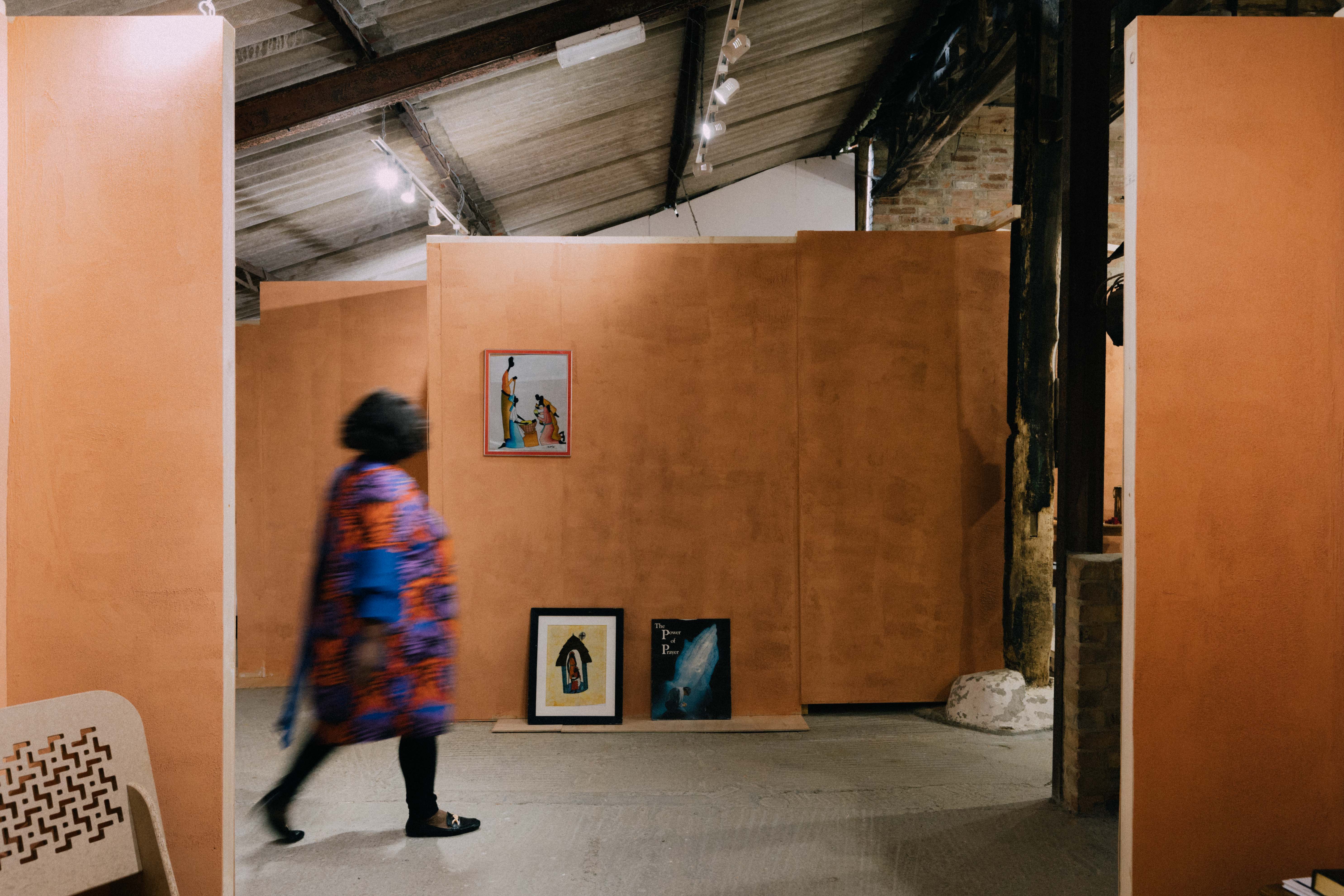
'What Makes a Space Nigerian?' celebrates the African home through a clever collection of items and rooms. Adebayo hopes this exhibition will encourage others to delve into the unique elements that define their dwellings. ‘I hope that by trying to define a space as Nigerian and seeing what that looks like, others from different African countries will be prompted to do the same.’
www.destinationmiltonkeynes.co.uk
